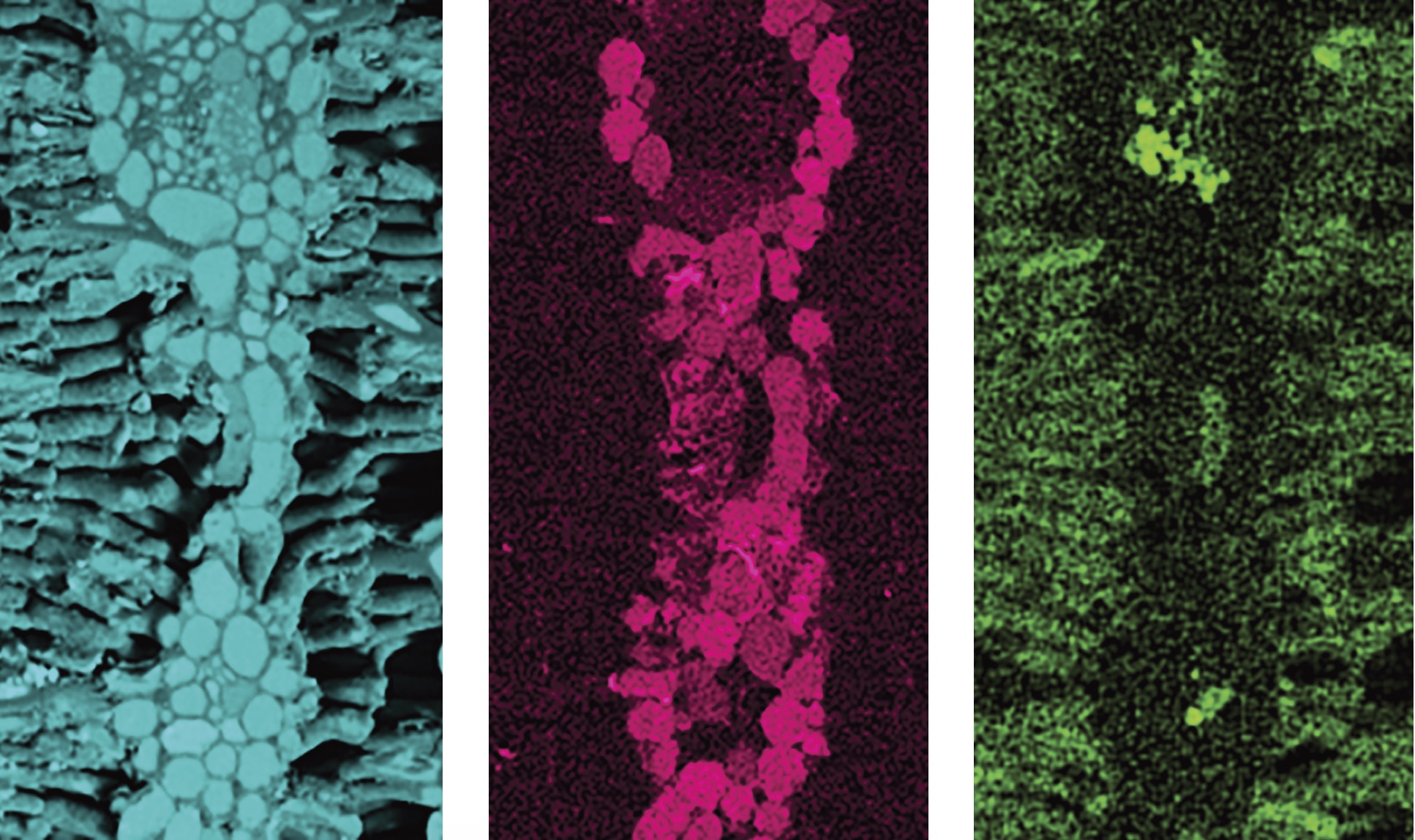Australia has a unique and demanding environment with soils that are often extremely low in phosphorus. This presents a challenge for our current suite of crops, almost all of which originated elsewhere and are adapted to different soil types. These crops require significant amounts of fertiliser to enable them to grow in these low phosphorus soils. Understanding how native plants deal with these low levels of phosphorus is providing new strategies to improve efficiency of crop production.
Southwest Australia is a global biodiversity hotspot where, for example, Banksia and Hakea plant species excel at very low soil and leaf phosphorus concentrations, yet exhibit rates of photosynthesis similar to those of crop plants, which have a much higher demand for phosphorus. How do they do this?
A/Prof. Peta Clode, working with a team of researchers led by E/Prof. Hans Lambers at the University of Western Australia (UWA), used cryo scanning electron microscopy at the UWA Microscopy Australia facility, to determine the concentration of elements in single leaf cells across a range of Australian, South American, and important crop plants. They discovered that higher photosynthetic efficiency is partly achieved by preferentially allocating phosphorus to where it is needed most – in the cells that do the majority of the photosynthesis. Interestingly, species in other families that evolved in phosphorus-impoverished landscapes also show this same phosphorus-efficiency trait. However, species in the same families that evolved in environments with richer soils do not. In the important crop, lupin, they found no preferential allocation of phosphorus to photosynthetic cells across species.

Element maps showing the distribution of oxygen (O) (left), calcium (Ca) (middle) and phosphorus (P) (right) in Hakea prostrata exposed to high Ca levels. The O map shows the leaf anatomy. The two rows of palisade mesophyll (photosynthetic cell layers) dark in the Ca map, but high in P.
With this, calcium must be adequately separated from the phosphorus-containing cells to avoid precipitation of calcium phosphates, which reduces the availability of these elements to the plant. This work has highlighted that plants that are good at keeping calcium and phosphorus away from each other (i.e. in different types of leaf cells), can tolerate a much wider range of soil calcium and phosphorus conditions.
These results highlight the likely role of soil phosphorus in driving the evolution of ecologically relevant nutrient-allocation patterns and that these patterns cannot be generalised across families as has been previously modelled.
Ding W. et al., 2018, Plant Cell Environ 41:1512-23.
November 26, 2019